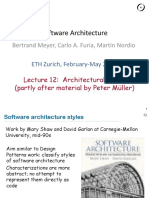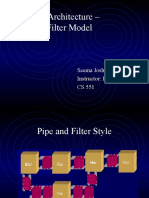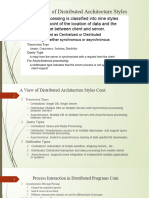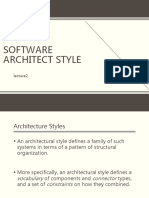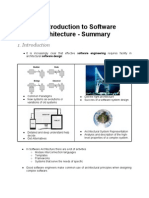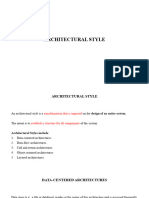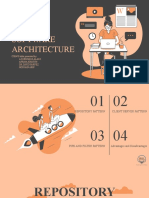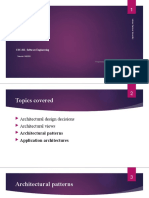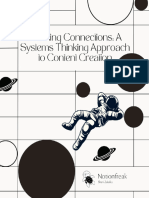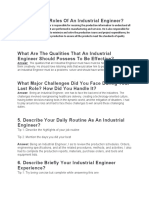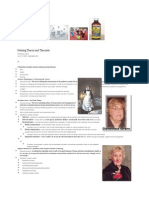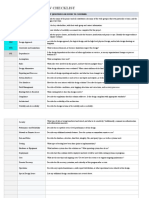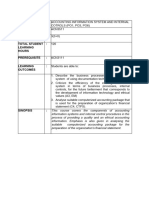0% found this document useful (0 votes)
7 views70 pagesApply Arch Styles and Patterns 4
The document discusses architectural styles and patterns in software engineering, emphasizing their role in improving design productivity by leveraging existing design experiences. It defines architectural styles and patterns, outlines common styles such as dataflow systems, object-oriented systems, and event systems, and highlights their key characteristics, strengths, and weaknesses. Additionally, it explores the activation model and quality attributes associated with different architectural styles.
Uploaded by
Dharani ManiCopyright
© © All Rights Reserved
We take content rights seriously. If you suspect this is your content, claim it here.
Available Formats
Download as PPT, PDF, TXT or read online on Scribd
0% found this document useful (0 votes)
7 views70 pagesApply Arch Styles and Patterns 4
The document discusses architectural styles and patterns in software engineering, emphasizing their role in improving design productivity by leveraging existing design experiences. It defines architectural styles and patterns, outlines common styles such as dataflow systems, object-oriented systems, and event systems, and highlights their key characteristics, strengths, and weaknesses. Additionally, it explores the activation model and quality attributes associated with different architectural styles.
Uploaded by
Dharani ManiCopyright
© © All Rights Reserved
We take content rights seriously. If you suspect this is your content, claim it here.
Available Formats
Download as PPT, PDF, TXT or read online on Scribd
/ 70












